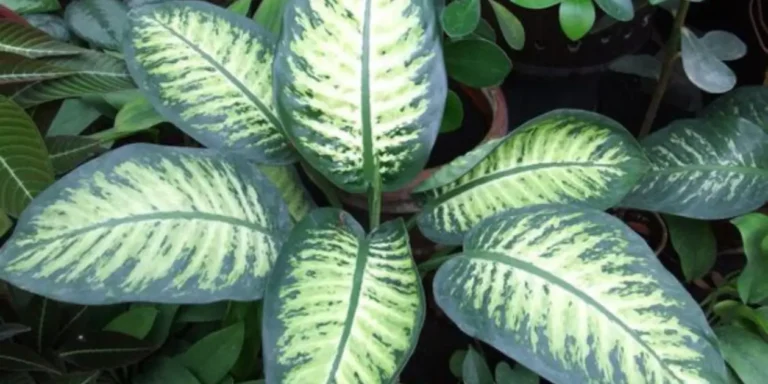Palm Trees in Florida: Imported Types
Palm trees are like the picture-perfect symbol of Florida’s tropical scenery, lining its beaches, parks, and neighborhoods with their beautiful leaves and gentle swaying. These trees are crucial for Florida’s environment because they give animals homes and food and are a big part of the state’s culture and economy.
In this guide, we’ll explore everything you need to know about palm trees in Florida, from the different types you can find to why they’re so special for the state. So, let’s dive in and discover the sunny world of Florida’s palm trees together!
5 Types Of Palm Trees in Florida
1: Cabbage Palm (Sabal palmetto)

- Description: The cabbage palm, the Sabal palmetto, is Florida’s state tree. It boasts a sturdy trunk topped with fan-shaped fronds.
- Features: Resilient, salt-tolerant, and a symbol of Florida’s coastal beauty.
- Where to Find: Along coastlines, parks, and residential areas.
2: Bismarck Palm Tree (Bismarckia nobilis)

- Description: The Bismarck palm stands out with its striking silver-blue leaves and stout trunk.
- Features: Drought-tolerant, low maintenance, and a tropical showstopper.
- Where to Find: Landscapes, botanical gardens, and upscale neighborhoods.
3: Canary Island Date Palm (Phoenix canariensis)

- Description: The Canary Island date palm exudes elegance with its feathery fronds and pineapple-like trunk.
- Features: Hardy, drought-resistant, and reminiscent of Mediterranean landscapes.
- Where to Find: Streets, public spaces, and private gardens.
4: Chinese Fan Palm (Livistona chinensis)

- Description: The Chinese fan palm boasts large, fan-shaped leaves and a slender trunk.
- Features: Adaptable, fast-growing, and perfect for urban environments.
- Where to Find: Parks, commercial areas, and residential yards.
5: Mexican Palm Tree (Washingtonia robusta)

- Description: The Mexican palm, also called the Washingtonia robusta, graces Florida’s skyline with its tall silhouette.
- Features: Fast-growing, drought-tolerant, and a favorite for lining streets.
- Where to Find: Urban areas, boulevards, and city parks.
Benefits of Palm Trees in Florida’s Landscape
Certainly! Palm trees are crucial in maintaining Florida’s unique and diverse environment. Let’s explore the benefits they offer:
- Natural Shade and Energy Savings:
- Palm trees provide natural shade, especially in sunny Florida. Their broad fronds create cool spots, reducing the need for air conditioning and lowering homeowners’ energy costs.
- By strategically planting palms around buildings, you can create a more comfortable outdoor environment and reduce heat absorption.
- Wildlife Habitat:
- Palm trees serve as vital habitats for various wildlife species. Birds, insects, and small mammals find shelter among the fronds and branches.
- The nooks and crannies of palm trunks provide nesting sites for birds, contributing to local biodiversity.
- Food Source:
- Palms produce fruits, seeds, and flowers that are eaten by wildlife. Birds feed on palm fruits, while insects pollinate the flowers.
- Erosion Control:
- Palm roots help stabilize soil, preventing erosion in coastal areas. Their extensive root systems hold sand and prevent it from washing away during storms.
- Aesthetic Appeal:
- The lush foliage and distinctive shapes of palm trees create stunning vistas that attract tourists worldwide.
- Palms contribute to Florida’s scenic beauty, whether lining streets, gracing parks, or adorning private gardens.
Fertilizing
- Timing: Fertilize during the warmer months, typically from spring to early fall. Avoid fertilizing in winter when palm trees are less active.
- Slow-Release Fertilizer: Use a slow-release palm fertilizer to provide nutrients gradually over time. Apply it around the base of the tree, following the manufacturer’s instructions.
- Nutrient Balance: Look for a fertilizer with a balanced N-P-K ratio (nitrogen, phosphorus, and potassium). Palms need these nutrients for healthy foliage and root development.
- Micronutrients: Palms benefit from micronutrients like magnesium, manganese, and iron. Choose a fertilizer that includes these elements.
- Avoid Overfertilization: Too much fertilizer can harm palms. Follow recommended rates and avoid applying near the trunk to prevent root burn
Lethal Yellowing
Lethal Yellowing is a serious sickness that harms palm trees in Florida. It causes their leaves to turn yellow and brown and eventually kills them. Bugs spread this sickness from tree to tree. It affects many types of palms and can harm the environment and economy. While there’s no cure, people are working hard to remove sick trees and prevent healthy ones from getting sick. Everyone’s help and understanding are significant in saving Florida’s beautiful palm trees.
Conclusion
In this blog post, we’ve explored some of Florida’s most beloved palm trees. Whether you’re a homeowner looking to enhance your garden or a curious traveler admiring the landscape, understanding these trees adds depth to your Florida experience. Remember to choose the right palm for your location, provide proper care, and enjoy the tropical vibes they bring!
What is the most common palm tree in Florida?
The most common palm tree in Florida is the Sabal Palm, also known as the Cabbage Palm. It’s found all over the state and is known for its resilience and iconic look.
How did palm trees get to Florida?
Palm trees came to Florida naturally, carried by animals or water, and also through human actions like colonial settlement and immigration, introducing new species to the region.
How tall do palm trees grow in Florida?
Palm trees in Florida can vary widely in height depending on the species. Some smaller palm species may only grow to a few feet tall, while taller species like the Royal Palm can reach heights of over 100 feet.
What are the best palm trees for front yard?
The best palm trees for front yards depend on factors like climate, space, and aesthetic preferences. Popular choices for front yards include the Queen Palm, Sabal Palm, and Pygmy Date Palm for their manageable size, attractive appearance, and adaptability to various growing conditions.





